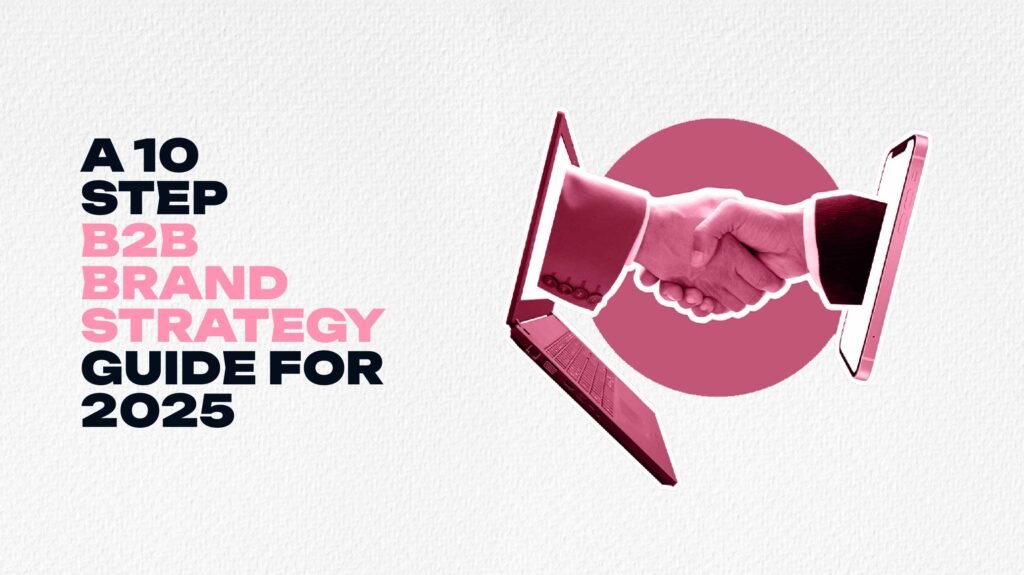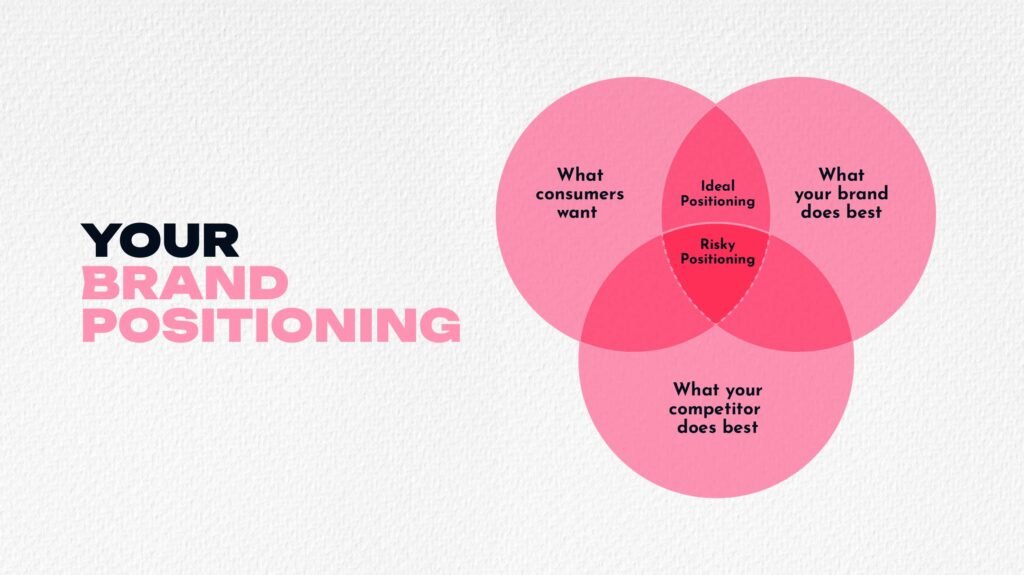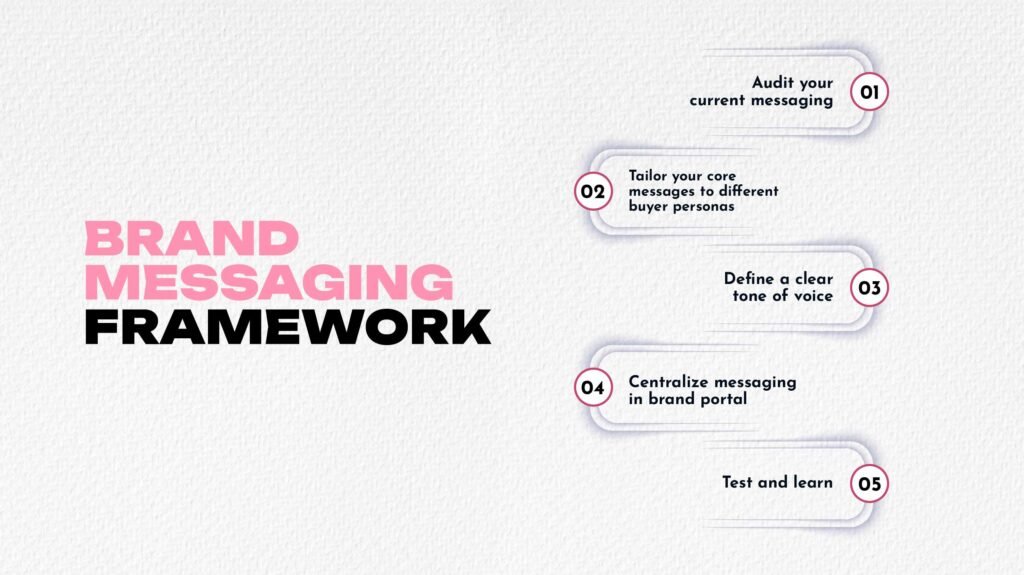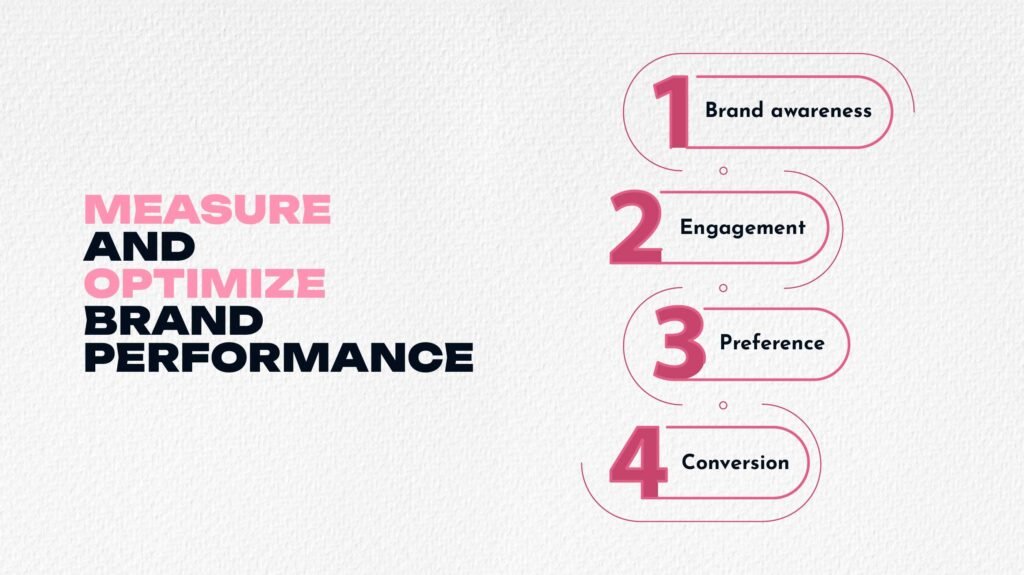
In today’s world, marketplaces are hyper-connected and digitally driven. Hence, B2B buyers aim to buy more than products or services. They look for trust, credibility, and confidence. Recent studies have come up with an interesting finding. That is 77% of B2B buyers’ purchase decisions are heavily influenced by one core thing. And it is the company’s brand reputation. As a result, having an effective B2B brand strategy has become a necessity. It is now a fundamental business imperative.
The past decades have shown us an evolving journey of B2B buyers. Nowadays, purchasing decisions require extensive research, which involves multiple stakeholders. It is a time when information is readily accessible and competitors are just a click away. This has forced businesses to do more rather than presenting features. Now they are required to tell compelling stories. Stories that will resonate on an emotional and intellectual level.
B2B brands are no longer confined to logos, color palettes, or product differentiation. Today, they encompass the entire experience. From the first impression on social media to the post-sale customer support. Because effective B2B branding influences many factors. The company’s expertise, values, promise of delivery, and how customers perceive them.
Below we have assembled a 10-step guide, designed for 2025 and beyond. It includes the latest insights from top CMOs, B2B brand strategist, and market research. You can call it a blueprint that goes beyond theory. It’s a way to get access to actionable steps, practical examples, and tools. And implement it right now.
Master these steps to refresh a brand or hire a B2B brand strategist to build one from scratch. The final outcome will be a memorable, trustworthy brand positioned for long term growth.
Modern B2B branding strategy starts with purpose. According to Deloitte, a brand with a clear mission can outperform the competitors. That too by 42%. A brand that is purpose-driven fosters many things. These include connections, brand loyalty, and stronger employee retention.
When your purpose should go beyond profits. Then it will resonate with your customers’ beliefs and business values.
Your purpose must go beyond profits. It should resonate with your customers’ beliefs and business values. Like Salesforce (“We bring companies and customers together”), Cisco (“Powering an inclusive future for all”), or HubSpot (“We help businesses grow better”).
A compelling brand purpose acts as your internal compass and external rallying cry. Your team gets aligned around a shared vision. And customers get something meaningful to believe in. This answers your ‘why’. Why you exist, why it matters, and why people should care.
Key Tips:
Your mission should align with customer outcomes.
Get C-suite buy-in by using internal workshops.
The purpose should be simple, emotional, and memorable.
With community-led storytelling, turn your mission into a movement.
Your product roadmaps, hiring, CX, and CSR initiatives should reflect the mission.
A clearly defined purpose is your guide to marketing and communication. A guide which informs strategic decisions across departments. It’s the north star for innovation, customer experience, and culture. And a B2B brand strategist can help you find that north star.
The days of generic buyer personas are long gone. In B2B, you’re engaging with multi-layered buying groups. They are made up of 6–10 decision-makers. Each with unique concerns, priorities, and influences. And according to Gartner research this complexity has only increased.
A deep insight into these audiences will bring an effective B2B branding strategy. Understand their motivations, pain points, and journey stages. And shape your brand to a more relevant and personalized one. Buyers aren’t just rational. They’re emotional and get influenced by peer validation, thought leadership, and timing.
Today’s buyer personas must reflect many factors. Behavioral data, emotional motivators, and psychographic nuances. You must know their ‘what’ and ‘why’ of their buying patterns.
Quick Exercise:
Interview your best clients.
Develop 3–5 detailed personas: Decision-maker, Influencer, End-user, Technical gatekeeper, Budget approver.
Find out their content preferences, platform usage, and emotional drivers.
Update annually with new insights from sales and support teams.
Track the buying committees’ journey across long cycles and group dynamics.
Look beyond basic job titles and demographics. Find out what success means to each persona. What motivates them? Innovation? Recognition? Operational efficiency? Develop messaging and touchpoints around those insights.
Bonus Tip: Use AI-powered customer intelligence. Take help from platforms like SparkToro, Crayon, or Wynter. And collect real-time persona data.

Blend strategy with perception to position your brand. This is how you occupy a place in the minds of your customers.
Positioning Strategy pioneer Al Ries states, “Marketing is not a battle of products, it’s a battle of perceptions.” Your B2B brand positioning must communicate three factors. Who you serve, what you solve, and why you’re better. All in one clear, compelling sentence.
Your brand positioning should highlight two major aspects. Your unique value and competitive edge. Ask:
How is your offering different from others?
Which gap in the market are you filling?
What will make someone choose you over alternatives?
Positioning Statement Formula: “For [target audience] who [need], our brand is the [category] that [unique differentiation] because [reason to believe].”
Examples:
Slack: “Be less busy.”
Mailchimp: “All-in-one marketing platform for growing businesses.”
Asana: “Work on big ideas, without the busywork.”
Your brand should consistently deliver on this promise. And this needs to be done at every touchpoint. This includes website, social media, and onboarding experience. Even your support team should reinforce the same positioning.
Tools to Use:
Perceptual mapping
Competitive brand audits
Brand archetype models (e.g. Hero, Sage, Explorer)
Category mapping and whitespace analysis
A well-defined position makes things easier. It simplifies customer decision-making and amplifies differentiation. It becomes a strategic filter for you. Gives you the power to decide what to say, how to say it, and where to invest.
But keep in mind that the market evolves regularly. Hence, your positioning should adapt with the time. Reassess it every 12–18 months.
Getting your brand identity right is crucial. It is often the first tangible interaction prospects have with your business. A strong identity tells your brand story visually and verbally.
First start with your logo. Understand how your brand identity translates across multiple touchpoints. Your website, email signatures, sales presentations, product packaging, and even office space design. Consistency in typography, colors, and imagery builds subconscious recognition. It signals professionalism.
Color psychology has a significant role to play here. For example, blue often conveys trust and dependability. That is why it’s a popular choice among B2B tech companies. Meanwhile, green can evoke growth and sustainability. Ideal for brands focused on innovation and environmental responsibility.
The beginning of digital has also transformed brand identities. Many factors are now standard practices. Such as responsive logos that adjust size and complexity based on screen dimensions. Another way is sonic branding. Like short audio cues or sounds associated with your brand. This adds an extra layer of memorability in video content and product interactions.
You must ensure accessibility. Brand color contrast should meet ADA guidelines. And typography is legible on all devices. This will result in a widened reach and demonstrates inclusivity.
A thorough brand identity system includes a detailed style guide. It outlines these elements and explains their correct usage. And prevents dilution of your brand’s visual impact over time.

Your brand voice and communication strategy can only have impact through unified messaging. Be a consistent voice that resonates across all departments, channels, and buyer personas.
First audit your current messaging. Check across sales decks, website copy, blog posts, and social media. Look for gaps, redundancies, and inconsistencies. Let’s say, your sales team’s pitch is emphasizing cost savings. On the other hand your website focuses on innovation. Then you’re obviously sending mixed signals.
Next step is to tailor your core messages to different buyer personas. The C-suite might care about ROI and risk reduction. But end users prioritize ease of use and support. Your messaging framework should align with these needs. That’s why always provide ready-to-use value propositions and key messages.
Define a clear tone of voice. See if you are professional and authoritative. Warm and conversational. Bold and disruptive. This helps you to ensure your brand sounds the same whether a blog post or a customer service email.
For your press releases include elevator pitches for quick introductions and a boilerplate. During client interactions take necessary steps. Have your sales enablement teams FAQs and objection-handling scripts. This reinforces brand messaging.
Lastly, centralize this messaging in an easily accessible document or brand portal. This ensures everyone stays on-brand and the risk of miscommunication gets reduced.
Your people carry your brand through their breaths and lives. Employees become powerful ambassadors when they understand and believe in the brand. That is when they can deliver authentic customer experiences.
Hire employees who align with your brand values. Look for candidates who align with your mission and culture. And reinforce brand principles through onboarding. Conduct regular training sessions for them. Train them to translate brand promises through daily actions and decision-making.
Reflect your brand’s tone and values through internal communications. And keep your employees engaged and informed. There are many ways to reinforce the brand values among them. Like celebrating brand-aligned behaviors publicly. Let’s say your brand stands for innovation. Then you should recognize employees who come up with new ideas or improvements.
Top people from the Leadership must visibly champion the brand. They can promote the brand on platforms like LinkedIn. Executives can post stories and insights. Posts that align with your brand identity. This will eventually strengthen credibility both inside and outside the organization. Such brand embodiment from the top-down position creates trust and alignment.
Always remember, a brand is more than marketing. Your employee helps to shape it as an experience. In a competitive talent market, a strong brand culture plays a strong hiring role. It attracts and retains top performers who become your best brand advocates.
In B2B, buying cycles can be long and complex. That’s why you need impactful campaigns to accelerate brand recall and nurture trust. The best campaigns spark emotional engagement. And it can be done by combining data-driven insights with creative storytelling.
Incorporate customer stories and testimonials. They act as social proof. These real stories help potential customers picture success with your solutions. Video formats such as mini-documentaries or animated explainers are effective too. Particularly for conveying complex ideas in a simple manner.
Leverage interactive content like calculators, assessments, or personalized demos. This adds value and involves prospects in the buying process. Such campaigns do better than static ads. They encourage deeper engagement.
These days B2B buyers look for other major factors too. These include sustainability, diversity and corporate social responsibility. Create campaigns that genuinely highlight your company’s efforts in these areas. These will differentiate your brand and resonate in the buyer’s mind.
Don’t be afraid of bold visuals or provocative messaging. This challenges industry norms. Just make sure they align with your brand identity and audience expectations. Rely on your analytics and test with campaigns on a regular basis. The impact will be maximum.
Social media has proved itself as a branding engine. Before connecting with a sales rep, B2B buyers engage with an average of 13 content pieces.
Key Platform Data:
80% of B2B leads come from LinkedIn.
70% of B2B decision-makers watch YouTube for product research.
42% of B2B brands now use Instagram to show company culture.
Content That Converts:
LinkedIn carousels for education
Founder videos to build trust
Polls and questions to drive engagement
Repurposed webinars as short clips
Advanced Tip: Get help from social listening tools like Brand24 or Sprout Social. Use them to monitor brand sentiment and identify engagement opportunities.

One of the most essential tasks is to measure brand success. It is challenging too. You can’t just do it on guess, without using metrics.
Key Metrics to Track:
Brand awareness: Survey data, direct traffic, impressions
Engagement: Time on page, shares, comments
Preference: NPS scores, brand mentions
Conversion support: Win/loss analysis, assisted conversions
Tools You Can Use:
Google Analytics 4 (with GA Goals)
Hotjar or Crazy Egg for visual behavior mapping
Brandwatch for sentiment analysis
Bonus Tip: You should have a quarterly brand scorecard. Gauge alignment by including metrics across marketing, sales, and customer success.
Step 10: Future-Proof with Brand Agility
In 2025, B2B brands which stay adaptive lead the game. Because trends are evolving before you can even blink. And if your brand is static, you will get left behind.
Strategies for Agility:
Reassess positioning by reviewing brand quarterly.
Cross-functional ideation sessions
Scenario planning for crises or industry shifts
Make use of AI tools to deliver real-time personalization. Adobe reports that the tendeny of investing in AI-driven personalization has increased by 62%
Examples:
Dynamic website content based on visitor segment
Predictive email campaigns using CRM behavior data
Consistency and responsiveness makes your brand agile.
Bonus: Collaborate Across Departments
Get rid of the idea that your brand lives in the marketing silo. It’s being shaped continuously at every touchpoint. Sales calls, customer support tickets, product onboarding, and more.
Tactics to Build Cross-Team Alignment:
Take reps from every department and form a brand council
Brand updates should be shared monthly across the departments.
Host brand workshops with sales and product teams on a regular basis.
Everyone within the organization should understand the brand promise and how they contribute. This makes the customer experience more cohesive.
The business-to-business landscape is getting more humanized. Buyers now expect to feel relevance, personalization, and consistency across every touchpoint. Build a strategic B2B brand with intention and clarity. This can be your biggest competitive advantage.
Companies often focus exclusively on lead generation or sales enablement. But they miss out on branding. Branding is what sets the foundation for every downstream business activity. A powerful B2B brand opens new doors for you. It helps you to close deals, foster relationships, and build a lasting legacy.
This 10-step brand strategy guideline isn’t just a checklist for you. It shows you how to have a strategic mindset. A continuous process about viewing your brand as a living and evolving asset. And knowing that your brand needs nurturing, alignment, and investment across organisations.
Treat branding as a long-term growth lever. Outperform your competition in both revenue and reputation. When your brand resonates with the right audience it creates awareness. When the brand is consistent across every platform, advocacy takes place.
As we move further into 2025 and beyond, successful B2B brands have established a set of traits. They know how to simplify complexity and communicate with empathy. They lead with authenticity that takes them above the noise.
Maybe you need to reposition your company, or refresh your identity. What if you have to build your B2B brand from scratch? You should always remember consistency builds trust. Then comes clarity which creates connection. Go with bold branding that wins hearts and markets.
B2B branding in 2025 requires more than recognition. B2B branding is about resonance. The strongest brands don’t just show off. They create ways to trust them.
Follow this 10-step guide, and you’ll be able to establish a modern B2B branding strategy. And embed your brand into the culture, behavior, and performance of your business.
Remember: Great branding isn’t a campaign. It’s a continuous commitment to clarity, relevance, and differentiation.
Build a bold brand. Because in B2B, a brand that is true on its own always wins.